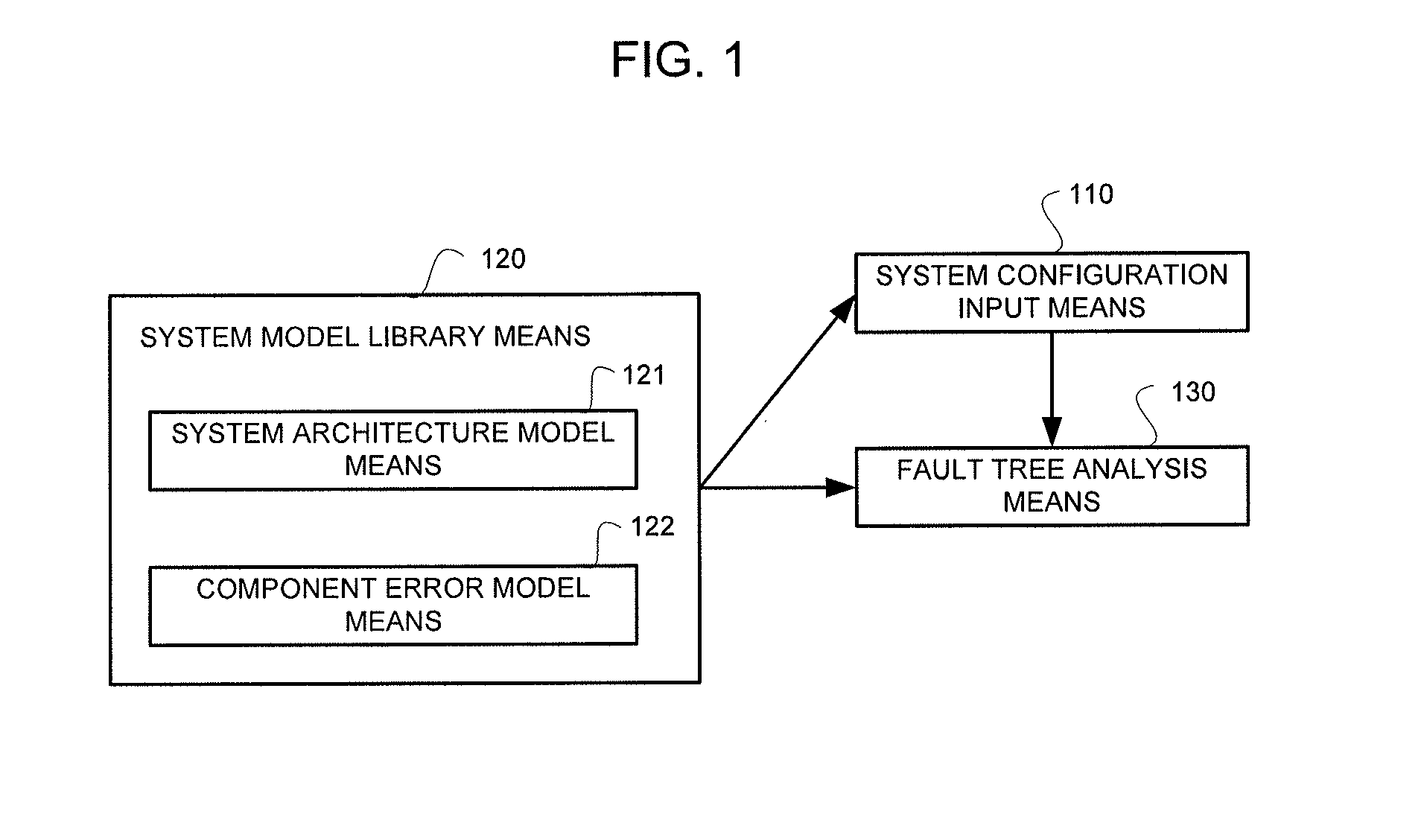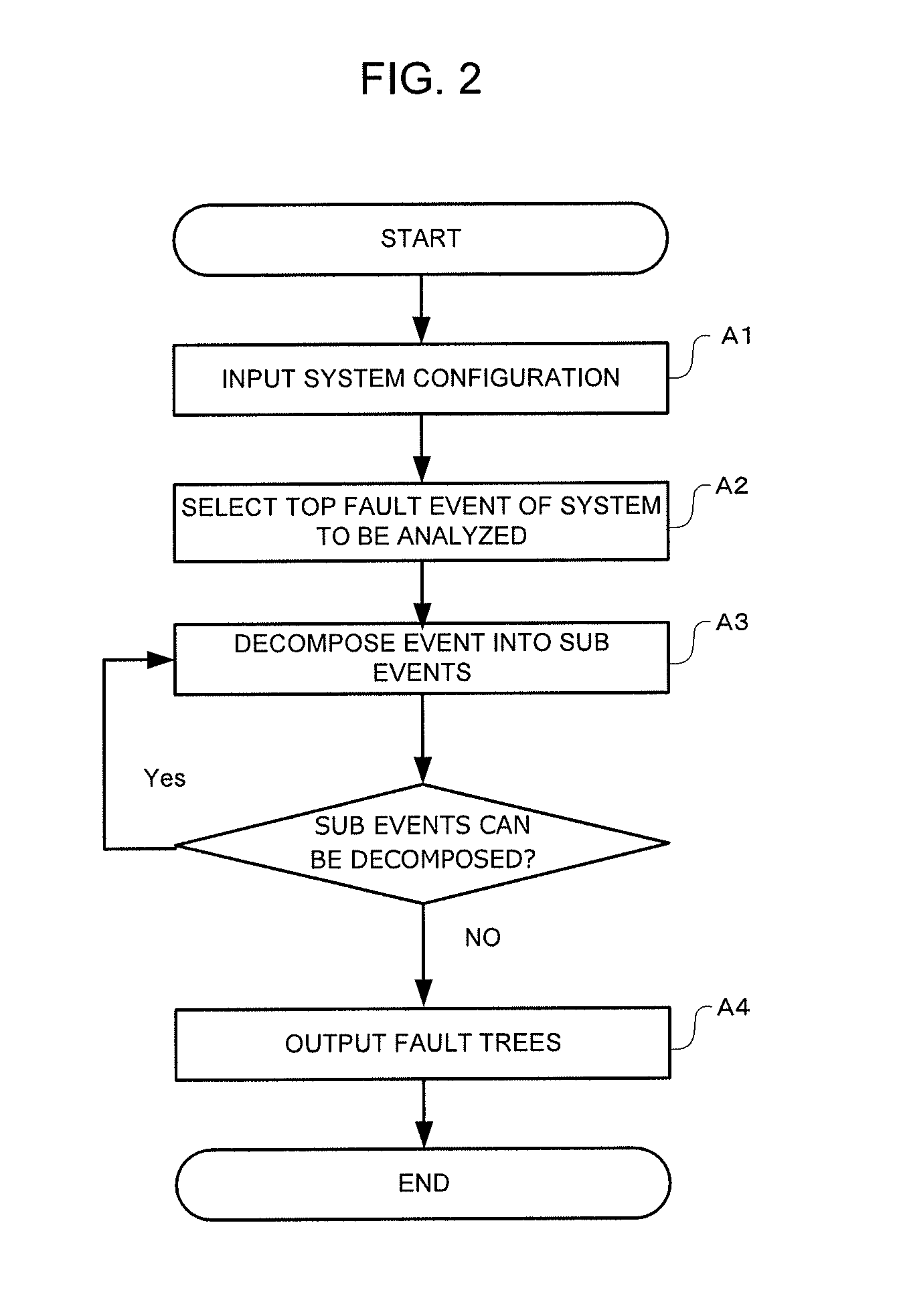Static fault tree analysis system and method from system models
a fault tree and system model technology, applied in the direction of process and machine control, testing/monitoring control system, instruments, etc., can solve the problems of not being able to propose a systematic and automatic method or model to help engineers develop fault trees in an efficient and correct way, and typically limited to specific domains and systems
- Summary
- Abstract
- Description
- Claims
- Application Information
AI Technical Summary
Benefits of technology
Problems solved by technology
Method used
Image
Examples
example 1
[0075]Next, an operation of the present invention will be explained by using specific examples.
[0076]One high dependable network configuration is shown in FIG. 6. Hereinafter, a configuration of the system will be explained.
[0077]The system consists of two servers, s1 and s2, and s1 is the primary (active) one, while s2 is a spare to be activated when s1 fails.
[0078]Each server has two network cards, and respective network cards are cards of c11 (primary) and c12 (spare) of the primary s1, and cards of c21 (primary) and c22 (spare) of the stand-by s2.
[0079]There are two hubs h1 and h2, and two hubs are connected with the network cards c11, c12, c21 and c22 with wired cables b11 (between c11 and h1), b12 (between c12 and h2), b21 (between c21 and h1), and b22 (between c22 and h2).
[0080]An example system architecture model denoted in a UML form is presented in FIG. 7.
[0081]This system architecture models are supposed to be saved in the system architecture model means 121, and they can...
PUM
 Login to View More
Login to View More Abstract
Description
Claims
Application Information
 Login to View More
Login to View More - R&D
- Intellectual Property
- Life Sciences
- Materials
- Tech Scout
- Unparalleled Data Quality
- Higher Quality Content
- 60% Fewer Hallucinations
Browse by: Latest US Patents, China's latest patents, Technical Efficacy Thesaurus, Application Domain, Technology Topic, Popular Technical Reports.
© 2025 PatSnap. All rights reserved.Legal|Privacy policy|Modern Slavery Act Transparency Statement|Sitemap|About US| Contact US: help@patsnap.com



